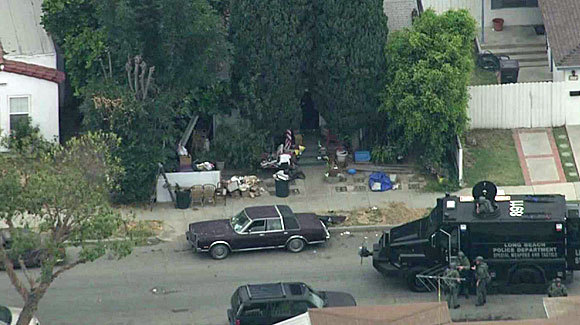Since the days of the Collier Brothers in Manhattan first responders have been

dealing with the affects of compulsive hoarding disorder. The ChamberofHoarders.com is a website dedicated to teaching educating first responders on the needed changes to tactics and challenges they will face when entering the hoarding environment. From bio-hazards during a medical response to a working structural fire hoarding offers dangers that can affect responders for years.
The mission of this website is to deliver actionable content that you can put to action immediately. Starting with this post we would like to walk you through the causes, challenges, and solutions when dealing with the conditions caused by compulsive hoarding. Over the next 52 weeks we will be posting fresh content that offers insight into the disorder and how to change our operations to bring everyone home safe.
History of Compulsive Hoarding: Week 1
Compulsive Hoarding Disorder is defined as the accumulation of and failure to discard a large amount of belongings that have no apparent value, the accumulation makes living spaces unusable, and causes significant distress on the occupant (Frost and Hartl 1996) This clinical definition describes the inability to discard belongings that eventually accumulate from floor level until, eventually, ceiling height. Compulsive Hoarders receive positive feelings from the acquiring belongings and are unable to part with them because of the negative feelings they receive when parting with them.
This collection often is comprised of things that you and I would consider to have little value. Common items collected include:
- Newspapers
- Magazines
- Books
- DVD’S
- CD’S
These items can differ in each case of hoarding, depending on the afflicted’s compulsion.
It’s believed that Compulsive Hoarding Disorder affects between 700,000 - 1 million people. (Hoarding Handbook… Bratiotis,C, Steketee (2011) Many think that this number is lower than the actual number. Many cases of hoarding go unreported as the affected person often feels ashamed or embarrassed by their disorder. They don’t want “discovered” or “exposed” and often stay hidden inside their homes without allowing anyone to enter, including family members. Not allowing visitors inside will often keep the conditions hidden until an emergency happens and we, the first responders, find the conditions as we make entry to solve the problem.
Dealing with surprise can be one of the biggest challenges to first responders. Imagine responding to a seemingly normal looking home, just to open the door and find a labyrinth of belongings that reach to the ceiling. Most often the hoarding is discovered during a routine emergency medical call or fall assist. If you discover these conditions during one of these types of responses you need to start the pre-fire process in motion to establish a “Heavy Content” environment. Getting the information should be processed through your departments normal pre -fire planning process for constancy. Adding the plan to the normal collection of multi-family and high hazards buildings will make the plan available to the street level responders.
Having an understanding of the complexities associated with Compulsive Hoarding Disorder is required by the responders left to deal with the mess. It is a complex disorder that is NOT A CHOICE. We can not cast judgement or compare their living conditions with ours. Remember in their eyes belongings are valuable and not just trash laying around. Using a layer of compassion and understanding when dealing with the occupants will lead to a more successful outcome. This care should be taken in non life threatening conditions to understand, explain, and support them. Treating them like a beloved family member is a great method of supporting their emotional needs.
If you are mean spirited and use terms such as “trash house” or “hoarder” they can have severe reactions to yourself and crew, sometimes violent reactions. One example of this type of reaction occurred in Long Beach California as a code enforcement official showed up to a home to serve notice. The occupant shot the code enforcement officer in the head.
“Code enforcement officers arrived at the home about 8 a.m. Thursday to serve an inspection warrant in response to hoarding complaints. When they arrived he fired at them, police said, hitting one of the code officers in the head.” source La Times
This illustration should help us all understand how strong the compulsion to protect their belongings is. How threatened do you think a person would have to be in order to shoot a code enforcement officer? We all should keep this illustration in mind as we respond to hoarding conditions to ensure we all come home safe.
Thanks for stopping by chamberofhoarders.com as we begin the year long journey of discovery…..
As always you can learn more about Hoarding in our online Learning Center… Click Here!













